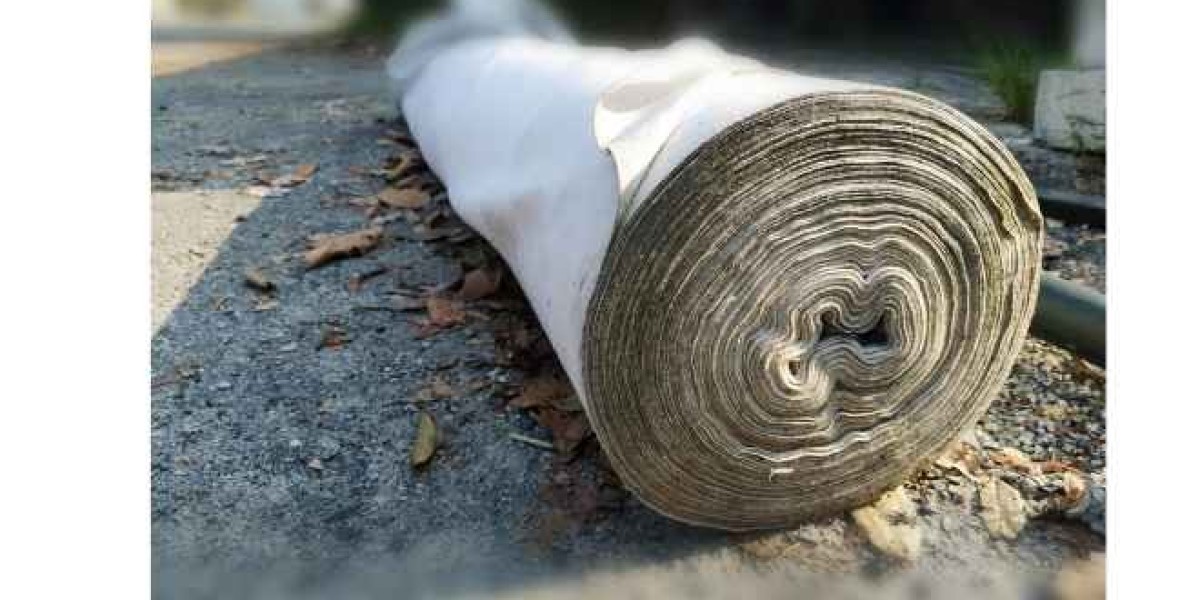In civil engineering and environmental management, innovation drives progress. One such innovative material making waves is geotextile fabric. This versatile material plays a crucial role in improving construction projects and environmental sustainability, offering a range of benefits from erosion control to soil stabilization. This guest post explores what geotextile fabric is, its types, applications, benefits, and answers frequently asked questions to provide an in-depth understanding of its significance.
What is Geotextile Fabric?
Geotextile fabric is a permeable textile material used in conjunction with soil, rock, or other geotechnical materials to enhance stability, filtration, drainage, and reinforcement. Made from Pulkit Plastic Products polymers such as polyester or polypropylene, geotextiles are categorized into woven, non-woven, and knitted types, each serving specific applications in construction and environmental projects.
Applications of Geotextile Fabric
Geotextile fabrics are utilized across a variety of industries due to their versatility and durability. Here are some key applications:
1. Soil Stabilization
Geotextiles improve soil stability by distributing loads and preventing soil erosion. They are commonly used in road construction, embankments, and retaining walls.
2. Erosion Control
By preventing soil displacement caused by water or wind, Geotextile 200 gsm protect the integrity of slopes, riverbanks, and shorelines.
3. Drainage Systems
Geotextile fabrics act as filters, allowing water to pass through while preventing soil and other particles from clogging drainage systems. They are essential in subsurface drainage and leachate management.
4. Reinforcement
In retaining walls and embankments, geotextiles provide additional strength to structures, enhancing their load-bearing capacity and longevity.
5. Road Construction
Geotextile fabrics are used to separate layers of soil, reduce rutting, and improve pavement performance. They also minimize maintenance costs over time.
6. Landfill Liners
Geotextiles are paired with geomembranes to create effective containment systems, preventing leachate from contaminating groundwater.
Types of Geotextile Fabrics
1. Woven Geotextiles
These are made by weaving fibers together, resulting in a strong and durable fabric ideal for applications requiring high tensile strength, such as road construction and soil stabilization.
2. Non-Woven Geotextiles
Manufactured by bonding fibers using heat, chemicals, or needle punching, non-woven Geo textile sheet are more flexible and permeable, making them suitable for drainage and filtration.
3. Knitted Geotextiles
Knitted geotextiles are created by interlocking yarns in a knitting process, offering flexibility and strength. They are used in specialized applications where adaptability is required.
Benefits of Geotextile Fabric
Erosion Prevention: Protects landscapes from water and wind erosion, preserving the natural environment.
Enhanced Drainage: Facilitates efficient water flow while preventing clogging, ensuring the longevity of drainage systems.
Soil Stabilization: Improves the load-bearing capacity of soil, reducing the risk of structural failure.
Cost-Effective: Reduces construction and maintenance costs by enhancing the durability of structures.
Environmental Protection: Minimizes environmental degradation by preventing soil loss and managing waste effectively.
Versatility: Available in various forms to suit a wide range of applications, from roads to environmental conservation projects.
Durability: Resistant to chemicals, UV exposure, and microbial attack, ensuring long-term performance.
Future Trends in Geotextile Fabric
As the demand for sustainable construction practices grows, innovations in geotextile fabrics are paving the way for greener solutions. Biodegradable geotextiles made from natural fibers are gaining popularity for temporary applications, such as erosion control during vegetation growth. Additionally, advancements in polymer technology are improving the strength, durability, and recyclability of geotextiles, making them even more environmentally friendly.
Smart geotextiles with embedded sensors for real-time monitoring of structural integrity are also emerging, offering enhanced safety and performance in critical infrastructure projects.
Conclusion
Geotextile fabric is a cornerstone of modern engineering, offering versatile solutions for soil stabilization, erosion control, drainage, and more. Its role in promoting environmental sustainability and improving construction efficiency cannot be overstated. As technology advances and the focus on eco-friendly practices intensifies, geotextile fabrics will continue to evolve, solidifying their place as an indispensable material in the engineering and environmental sectors.
By understanding the types, applications, and benefits of Geotextile woven fabric, industries can harness their potential to create durable, sustainable, and cost-effective solutions for today’s challenges and tomorrow’s needs.
FAQs
1. What is the difference between woven and non-woven geotextile fabrics?
Woven geotextiles: Stronger and less permeable, suitable for applications like soil stabilization and load-bearing structures.
Non-woven geotextiles: More permeable and flexible, ideal for drainage, filtration, and landscaping projects.
2. How is geotextile fabric installed?
Installation involves:
Preparing the site by clearing debris and leveling the surface.
Laying the geotextile fabric in the required position.
Securing the fabric using stakes, pins, or anchoring systems.
Adding the required overlay material, such as soil, gravel, or asphalt.
3. What is the lifespan of geotextile fabric?
The lifespan depends on the type of material and application. High-quality geotextiles, when properly installed, can last 20 years or more. Regular inspection and maintenance can extend their service life.
4. Can geotextile fabrics be reused or recycled?
Yes, many geotextiles, especially those made from polypropylene or polyester, can be recycled. Reusing geotextiles depends on their condition after use and the specific application requirements.









